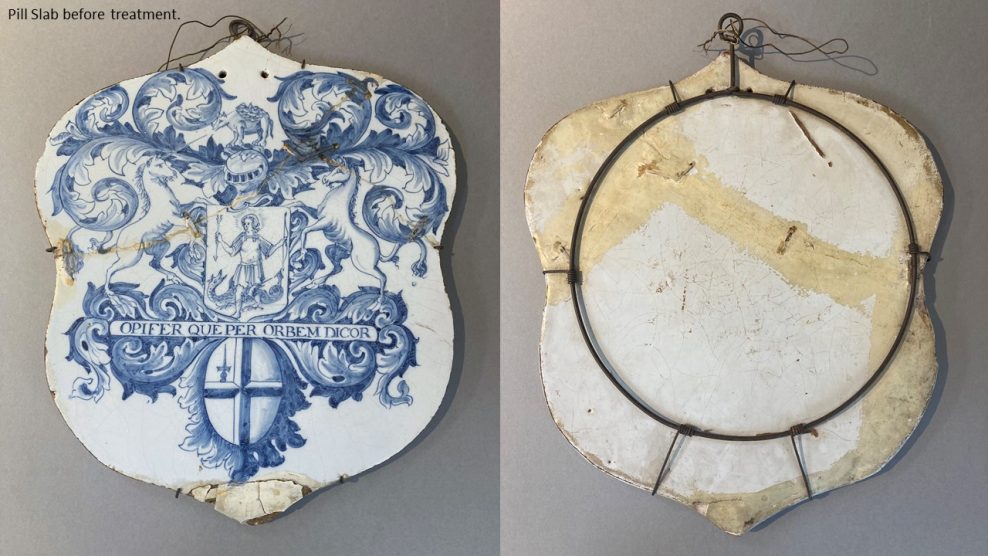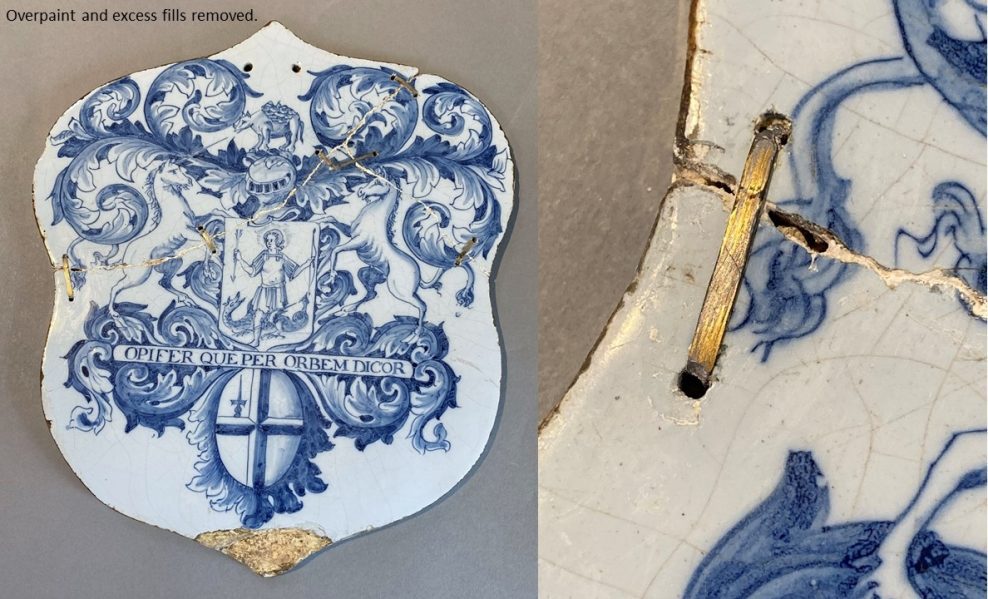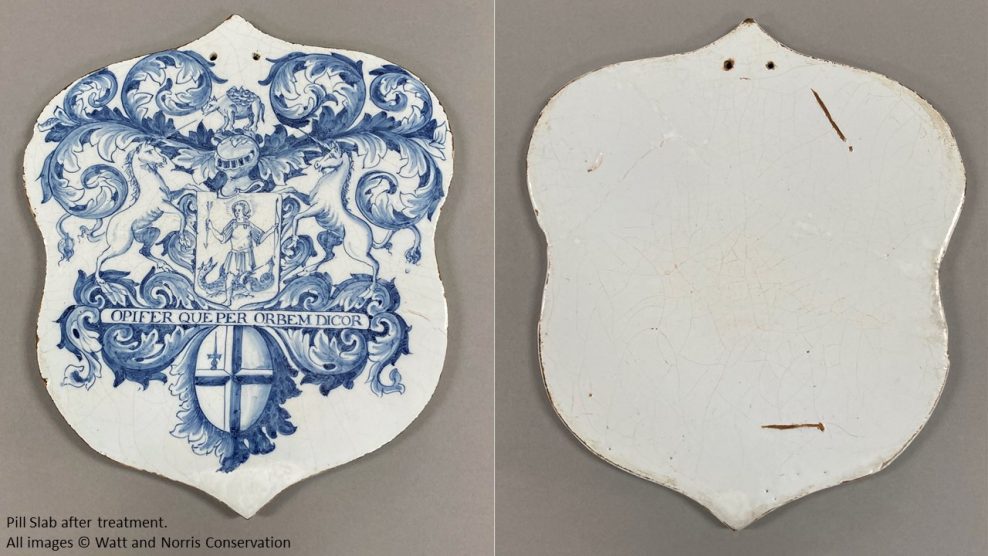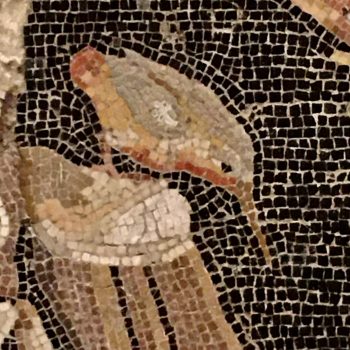Projects
Pill Slab
An early tin glazed earthenware Pill Slab decorated with the arms of the Worshipful Society of Apothecaries. This work of art is a cherished heirloom belonging to a family with a long history of practicing medicine. The motto, Opifer Que Per Orbem Dicor, translates as: I am spoken of all over the world as one who brings help.
This object is an exceptionally fine painted Pill Slab, with a rare shield shape that compliments the society’s coat of arms. The pill slab was made at the turn of the 18th century in tin glazed earthenware, the pattern was hand painted in cobalt blue. The arms were originally designed in 1617 depicting Apollo killing the dragon of disease surrounded by opulent scrollwork. He is flanked by unicorns representing King James I with a rhinoceros above, the horns of both animals are a reference to medicine. Below the motto is the badge of the City of London with a sword on Saint George’s cross. The Pill Slab had both a practical use for a doctor to make pills on, and an aesthetic purpose as a decorative object which could be hung to indicate membership of the livery company.
Exactly when the Pill Slab was acquired by the family is unclear, but their work in medicine is thought to go back at least to the early 19th century. Anecdotally, one family member worked as a Barber-Surgeon and sailed in the Battle of Trafalgar. The slab has been inherited through the mother of the current owner who is a nurse, and it is known to have belonged to her grandfather who undertook part of his training at St Thomas’ Hospital in London before becoming a consultant at the Royal Victoria Infirmary in Newcastle. Otherwise, links to the Worshipful Society of Apothecaries and City of London are unknown.
The object was manufactured with two holes for hanging. It has a slight dip in the centre with fine abrasions that are evidence that it was used to make pills. The slab was broken and repaired with soldered wire threaded through holes drilled in the ceramic. The joins and surface losses along the edge had been filled and painted, these restorations extended over the glaze. The restoration had degraded over time causing the paint to darken and the fills to crack and break apart. A metal mount was attached to the Pill Slab abrading the surface where it was in contact with the edge.
The goal of this project was to physically stabilise the object and improve its appearance for display. Deciding if the metal repairs should be kept was complex, the benefits and disadvantages were discussed in detail with the owner. In the end, we decided to remove the metal repairs because they distract from the delicate painting, put stress on the ceramic, and so that the stability of the joins could be improved.
The surface was cleaned, the degraded restorations removed, and the metal repairs taken out before dismantling the object. Fill material and dark deposits were cleaned from the breaks before reassembling and bonding with a conservation grade acrylic adhesive. The losses were sealed, core filled, colour gap filled, and polished. Colour gap filling is a technique where a transparent resin is bulked to make a paste and tinted to match the colour and opacity of the glaze. This approach added structural strength to the joins which support a relatively thick and heavy object. The pattern was replicated by hand over the fills in acrylic paints, mediums, and dry powder pigments. A stand was provided to display the Pill Slab in a way that supports the joins.






